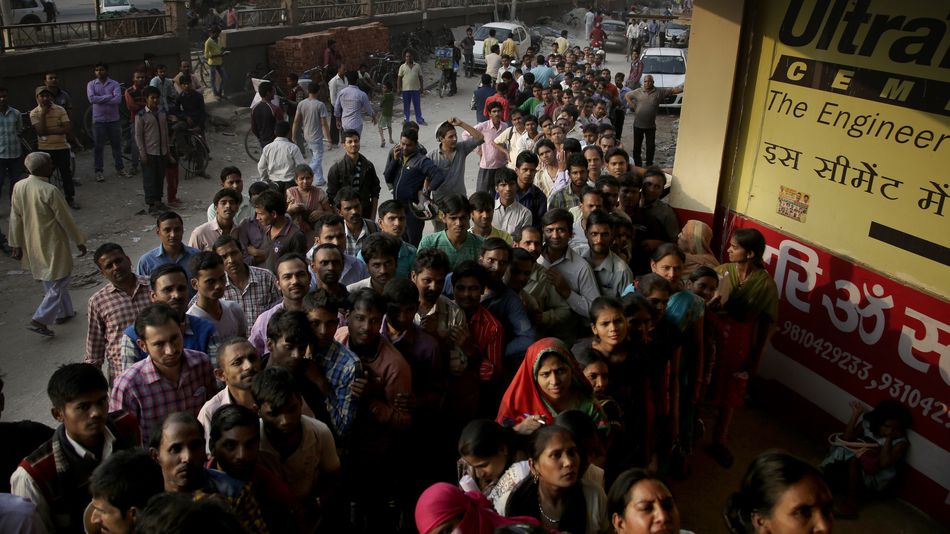Is this is an honest plan towards reform or just a populist measure at the cost of the state exchequer, ask Subhamoy Maitra and Abhinandan Sinha.
The day, November 8 2016, will be marked as an important day in the history of Indian politics and economy due to the unanticipated decision of demonetisation. The strategy of banning Rs 500 and Rs 1000 paper notes, without any prior notice, has already received serious attention in the academic community. Such analysis will continue for quite some time and a substantial effort will be made towards quantitative measures in this direction. In all probability, the public perception will be guided by politicians and by the media houses. There are already thousands of reports in print media, added to hours of televised discussion. However, the issues, raised through logical reasoning and also supported by mathematical justification, would have greater implication towards policymaking and the overall growth of our country.
However, the issues, raised through logical reasoning and also supported by mathematical justification, would have greater implication towards policymaking and the overall growth of our country.
This piece is motivated from such a scientific viewpoint. Most of the figures in our analysis will be used for representative purposes due to unavailability of exact data. However, you may always plug in your own estimates to follow similar mathematical calculations. Sincerely speaking, we cannot do anything more than to appeal our central government to publish clean data so that the claims from various sources can be judiciously examined.
Let us first discuss how this move will affect black money. Consider that in our country we have a total of Rs. 10 in cash with high denomination notes (the actual amount is believed to be 14 lakh crores) and out of that 80% is white. Thus, the ratio of white and black money is 8 to 2, that is, 4 to 1. Now due to this move, say 1 out of Rs. 2 of black money is somehow returned to the banks and the rest is in peace. Given that, the new ratio of white and black would be 8 to 1. Naturally white money will win by a bigger margin after this demonetisation. Now we should study how important is Rs. 10 (which is the money floating in cash) compared to the total wealth of our country. If the total wealth in our country (it includes a few tonnes of gold or a number of apartments at Mumbai and the flow of this wealth might be informally related to GDP) is Rs. 100, then it is clear that the cash is only 10% of that. If the rest 90% of wealth in our country (this corresponds to Rs. 90, but not in cash) is not properly audited, then the surgical strike on high denomination currency might not have serious implication towards eliminating black money. For example, consider that Rs. 30 out of this Rs. 90 amount of wealth is black. This, by itself, is thrice that of the total cash owing in the Indian market. Add to this the amount of black money, which is placed outside the country (this might be twice that of total cash in India, that is Rs. 20, say). Then the whole effort will have very little effect on eradicating a good proportion of black money. From a different viewpoint, the effect might still be significant when we assume that the hard cash is a significant part of our economy. It is believed that globally the cash in circulation to GDP ratio is in the range of 3% to 8%. However, it is much higher in India, which is around 13%. Thus, compared to world standard, India is a cash rich country and thus, it might be natural for the government to get a stock of this cash with the expectation that a good amount of black money will not return to the banks, increasing the hypothetical white to black ratio.
It is believed that globally the cash in circulation to GDP ratio is in the range of 3% to 8%. However, it is much higher in India, which is around 13%. Thus, compared to world standard, India is a cash rich country and thus, it might be natural for the government to get a stock of this cash with the expectation that a good amount of black money will not return to the banks, increasing the hypothetical white to black ratio.
Based on the huge infrastructural problems after the demonetisation drive, a strong argument is being placed in favour of electronic cash. This is indeed correct that in case of such computer based wealth, we generally have higher level of traceability related to the transactions. Unfortunately all the stakeholders of e-cash might not be as sincere and honest as our present central government! There is no dearth of intelligent hackers in software domain. They can successfully provide ways to manage certain level of intractability in e-transactions. For example, consider bitcoin. This is a crypto-currency as well as a payment system invented by an unidentified group of programmers. While many countries in the world accept this, such currency is not legal in many other countries including India. There are evidences that criminals in large part of the world cleverly use bitcoins to their advantage. While a detailed explanation of bitcoin will be of independent interest, we like to point out that electronic transactions never imply that black money cannot be percolated. The myth of white money, through the movements of electron, may be sweetly sold in the present circumstance. However, the basic premise of traceability in e-cash is flawed. Further, continuous cyber-threats on debit and credit card users in our country underline the vulnerability of such high-end systems. A nasty cyber attack on our banking system might have worse effect on infrastructure than the present scenario of taking back the existing high valued currency.
There is no dearth of intelligent hackers in software domain. They can successfully provide ways to manage certain level of intractability in e-transactions…However, the basic premise of traceability in e-cash is flawed. Further, continuous cyber-threats on debit and credit card users in our country underline the vulnerability of such high-end systems.
At the same time it seems that the government failed to understand the impact of demonetisation on rural people. Consider that around 40% of Indian adults do not use the banking facility regularly and mostly depend on cash. This could easily be more than 10 crore people. Let us assume that out of fifteen lakh crore rupees of high denomination notes, only fifty thousand crores (one in thirty) are lying with these people. Divide fifty thousand crore by ten crores and you will get Rs 5000 each for one person on an average. Each such person has to deposit the old currency in the bank. If each one of them has to spend an hour in such a transaction, the country wastes ten crore hours which is simply more that ten thousand man-years. Add to this the man-years spent by the bank employees, and the wasted hours due to the huge chaos around the country. Here the decision makers cannot sell the argument of counterfeit currencies to their defence. This is because the proportion of such currency is believed to be very little; may be a proportion of one in a lakh, that is at most a few thousand crores. Further, it is now believed that the new bank notes of denomination five hundred and two thousand are coming with similar security features. Thus, the present step is only a one-time solution that won’t have much long-term effect. It is a matter of time that fake notes may emerge again. Thus, the terrorism angle cannot be placed as an argument for wasting papers corresponding to fifteen lakh crore rupees of high denomination. Analysts will also highlight the additional few thousand crores for printing the new notes. Again, the complementary viewpoint could be as follows. Terrorism, based on fake and black currency, will be hugely hurt for the time being. Even if it is for a short period, with proper monitoring in the coming days the `terror financing’ might be resisted in an improved manner. Terrorism is an instrument exploited by the weaker party against a stronger opponent and `Terror financing’ using black money or counterfeit currency is one of the many aspects in this domain. Modelling this whole issue in a unified manner will be of serious academic interest.
However, the basic premise of traceability in e-cash is flawed. Further, continuous cyber-threats on debit and credit card users in our country underline the vulnerability of such high-end systems…Analysts will also highlight the additional few thousand crores for printing the new notes.
Thus, this is the time to calculate how much we are spending and how much we are gaining. The equations are not very simple and it is left to the government to provide the data. While we have so far mostly criticised the government moves, there are a few positive points too. The most welcoming issue is that the government could maintain certain level of confidentiality before the announcement on November 8. This is indeed a commendable effort. Further the issuance of Rs. 2000 note is another masterstroke. It must be true that such notes were getting printed at a large amount for last few days which is much more than the steady average of Rs. 500 or Rs. 1000 notes. If those had been the currency of existing denominations, that is 500 and 1000, then eye-brows might have been raised that why new notes of such denominations are being printed by such a large amount. However, the printing of 2000 rupee notes did not attract much attention as it might have been thought that government will release currency of higher denomination in the days of inflation. This is the reason that we are getting the notes of denomination 2000 initially in a larger proportion. The new 500 rupee notes are slowly arriving and then the 1000 rupee notes will also come.
We cannot deny that Narendra Modi led BJP government has taken a bold decision. Bold might not be beautiful. The country has to suffer for this move. This is nothing but an economic emergency in practice, though that might not be written explicitly in our constitution. How prepared we are will only be understood after a few days. A large portion of Indian middle class will be unhappy thinking that while we do not hoard black money, why should we suffer the effects of such an unprecedented move. A good proportion of rich businessman may be severely affected, irrespective of whether they were involved in corruption or not. The hardship of poor people will increase further. On the other hand government is showing dynamism as it is slowly increasing the limits of withdrawals from ATMs and banks, at the same time decreasing the amount of exchanging old currencies. Things will be tough for a few days and then hopefully it will slowly turn to normalcy. Public memory is weak, and thus people will indeed forget the pain of this reform. The main question is whether this is an honest plan towards reform or just a populist measure at the cost of the state exchequer. There are several unanswered questions, and the answers are blowing in the wind. It would be better the government be prepared with their answers in a logical manner before the wind turns into a storm.
We cannot deny that Narendra Modi led BJP government has taken a bold decision. Bold might not be beautiful.
Picture via http://mashable.com


